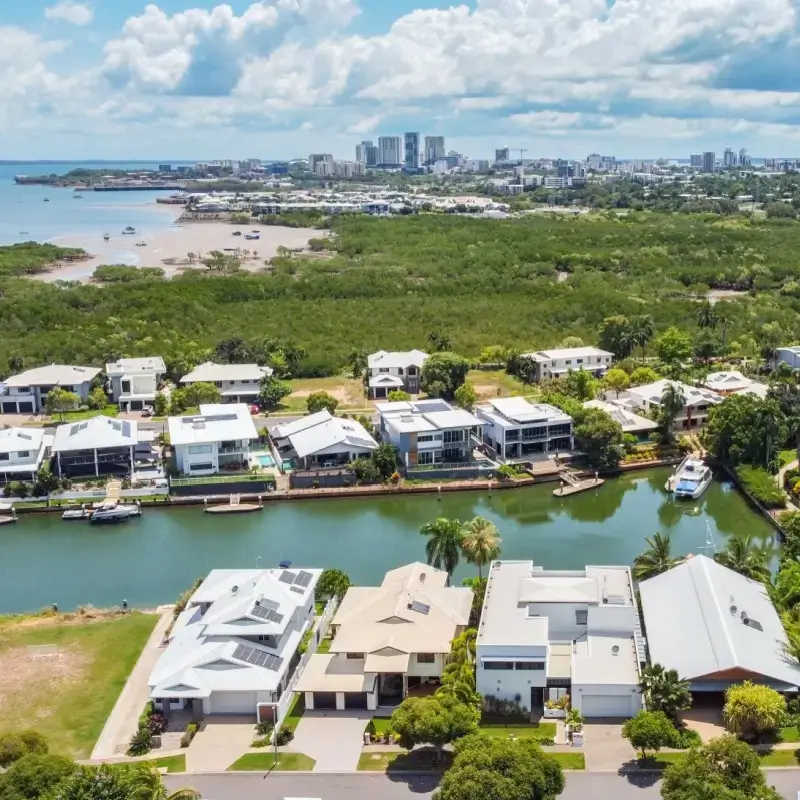Home / Compare Electricity &… / NT electricity explained
NT electricity explained
Note: This is an information page only, and we don’t offer quotes for NT electricity plans through our service.



Key takeaways
- Residential customers have to meet certain eligibility requirements in order to choose from limited retailers.
- The region’s energy market is open to full competition but is dominated by government-owned retailers.
- Concessions and rebates on electricity bills are available for some residents.
All about energy in the Northern Territory
What do I need to know about electricity in the NT?

Firstly, it’s important to know that the Northern Territory Government regulates the electricity market in the NT for residents and business customers using less than 750 MWh of electricity a year.1 Simply put, this means that the government sets electricity prices that retailers (also known as providers) must abide by and pass on to you.
The regulation of the electricity retail market may mean you have less choice (or none at all) when it comes to picking your electricity retailer. The government will ensure you pay a fair price, even if the cost of transmitting power to remote regions can be significant.
Without a regulated market, retailers could pass this cost on to consumers, meaning you’d pay more for your power depending on where you live.
Can I still choose my retailer?
Yes, it is possible for you to choose your retailer, but only under specific circumstances. While government-owned Jacana Energy dominates the market for residential and business customers – with less than 5% of residential customers using a different retailer,2 those who do want to switch retailers may need:
- To be using less than 750MWh of electricity a year
- To have a smart or interval meter (or be willing and eligible to have one installed)
- To be living on a residential property or in a retirement village with its own registered meter (e.g. not a caravan park, hotel or other building not used for residential purposes).
While choices are mostly limited to Jacana Energy or Rimfire, some customers may have access to pay-on-time discounts and a more competitive solar feed-in tariff.
Another exception is if you own or run a business in Darwin, Alice Springs, Katherine or Tennant Creek and use over 750 MWh per year. In that case, you may have more choice in being able to choose your retailer.
Why isn’t there more competition for electricity in the NT?
While other parts of Australia (like New South Wales or Victoria) have seen an influx of retailers since full retail competition was introduced, this hasn’t been the case in the NT. According to the Utilities Commission of the Northern Territory, this is due to:2
- Retailers not being interested in competing for a smaller customer population
- Retailers being restricted by electricity price caps set by the government
- Only customers with an interval or smart meter (devices that record electricity usage) having the ability to switch retailers.
Is gas available in the NT?
Some homes across the NT use gas as well as electricity. If your home is connected to built-in gas pipes, you’ll generally have access to natural gas. If there’s no gas connection, you may require Liquefied Petroleum Gas (LPG), which is stored in portable cylinders that need to be refilled or replaced when empty.
Energy distributors and providers in the Northern Territory
Who distributes electricity across the NT?
The state government-owned Power and Water Corporation distributes electricity across the NT. As a distributor, the Power and Water Corporation is responsible for managing the powerlines and poles that supply your home or business with power. The Power and Water Corporation is also a retailer in some parts of the Territory.
Which electricity retailers operate in the NT?
Electricity prices in the NT are open to full retail competition and operate in three regulated systems.2Despite this, these are the current NT electricity retailers:
- EDL NGD (NT)
- Jacana Energy
- Next Business Energy
- Rimfire Energy.
These electricity retailers all sit under a single distributor known as the Power and Water Corporation. They handle the infrastructure and distribution of electricity, as well as the meter reads that are then passed on to your electricity retailer.
This information is accurate as of May 2024.
Charges, tariffs and concessions
How you are charged for electricity in the NT
The Northern Territory Government regulates electricity costs through the Pricing Order, which sets the maximum amount you can be charged as a residential or business customer by retailers.1 Your bill is comprised of several different charges:
- Supply charges. A fixed daily charge you pay for electricity to be supplied to your home or business.
- Usage charges. The amount you pay per kilowatt-hour of electricity you use.
Charges can also vary based on tariffs, which is the amount you’re charged for the electricity you use. Tariffs in the NT may include:
- Flat rate (standard tariff). You pay the same rate for electricity no matter what time of day you use power.
- Time of use. You can be charged different rates for consuming electricity during certain times of the day or night (i.e. peak and off-peak times), if your meter supports this.
- Public benevolent institution (PBI). PBIs that help relieve distress and poverty can receive reduced electricity rates (usually lower than the standard tariff), so they can continue to help people in need. This tariff is only available for organisations registered with the Australian Charities and Not-for-profits Commission as a PBI.
- Multipurpose tariff. If you use electricity at your home for both personal and business purposes, a set amount per day is charged at a lower rate, while anything after this amount is charged at a higher rate.
What is a prepaid electricity meter?
Some residents across the NT use prepaid electricity or ‘pay-as-you-use’ meters for power. Rather than paying an electricity bill after you’ve used power, you buy e-tokens beforehand; if your electricity runs out, you’ll need to purchase more tokens.
There are three main types of pre-paid electricity meters:
- Card-operated meter. You have a prepayment meter card that links to your meter. You can top up your meter online, in-store or over the phone.
- Remote e-token. Think of this like a prepaid mobile phone plan; you purchase credit ahead of time when you need it. When all your allocated electricity is used, you buy more to continue powering your home.
- Single-use token. You can purchase single-use tokens at any of the eligible stores. These are fed into a lot into your meter and will add credit to your meter to the value of the token.
Prepaid electricity tariffs are adjusted every year a per changes set by the Northern Territory Government. Typically, your usage charge may be slightly higher with a pre-paid meter; however, you won’t have to pay for a daily supply charge.
Am I entitled to NT electricity concessions?
As part of the Northern Territory Concession Scheme, you may be eligible for discounts or rebates on your electricity bills. Concessions can apply to both retail and prepaid electricity meter customers, although the exact amount you’re entitled to can vary based on your circumstances.
You may be eligible for some concessions if you meet one or more of the following criteria:3
- You’re an electricity customer with Jacana Energy or your distributor is Power and Water Corporation
- You have a solar panel power system
- You use prepaid electricity meters
- You live in a registered caravan park
- You have an alternative energy system in place (e.g. you are off-grid and generate your own electricity, or you pay via private electricity token from your accommodation provider).
Check out our guide to energy concessions and rebates that you might be eligible for.
Meet our energy expert, Meredith O’Brien
As the Head of Energy at Compare the Market, Meredith O’Brien believes in educating Australian customers about the everchanging gas and electricity market so they can adjust their energy usage habits and get the most out of their energy plans.
Meredith has six years within the energy industry, following 15 years of experience in financial services and is currently studying a Master of Business Administration. Meredith is a dedicated customer advocate who is passionate about empowering Australians to find the right products to suit their needs by removing the confusion from comparing.
Find out more about energy
1 Utilities Commission of the Northern Territory. Electricity Retail Pricing. Accessed May 2024.
2 Utilities Commission of the Northern Territory. Northern Territory Electricity Retail Review 2022-23. Published May 2024. Accessed May 2024.
3 Northern Territory Government. Electricity concessions. Accessed May 2024.

